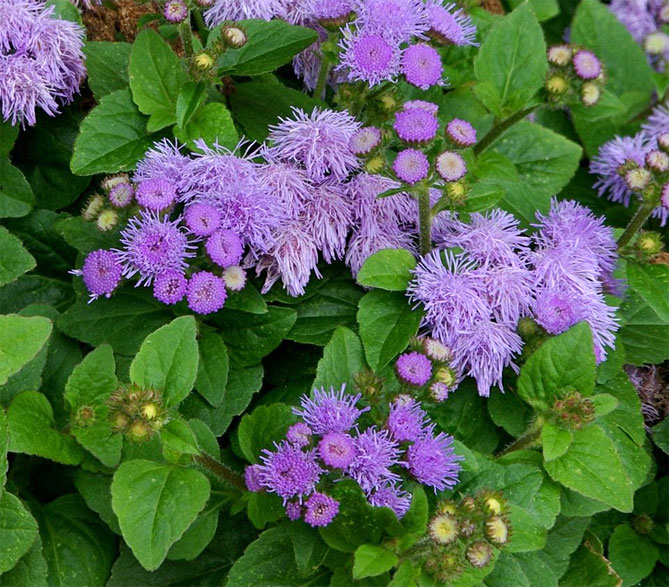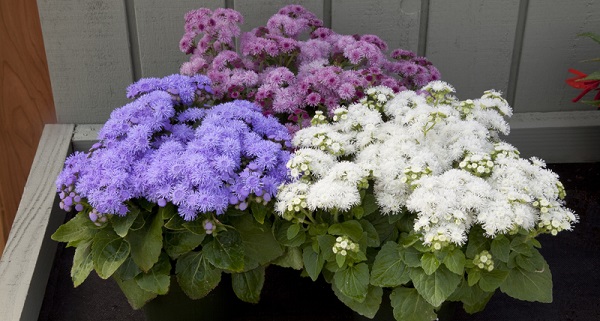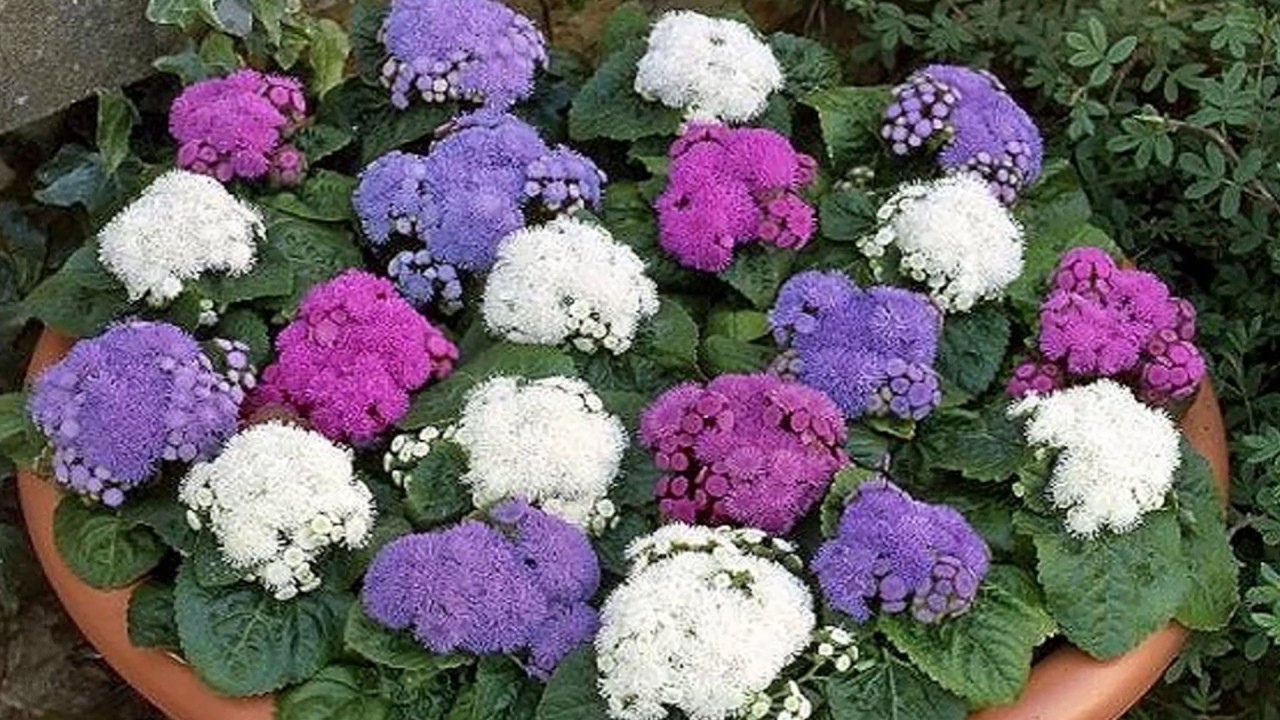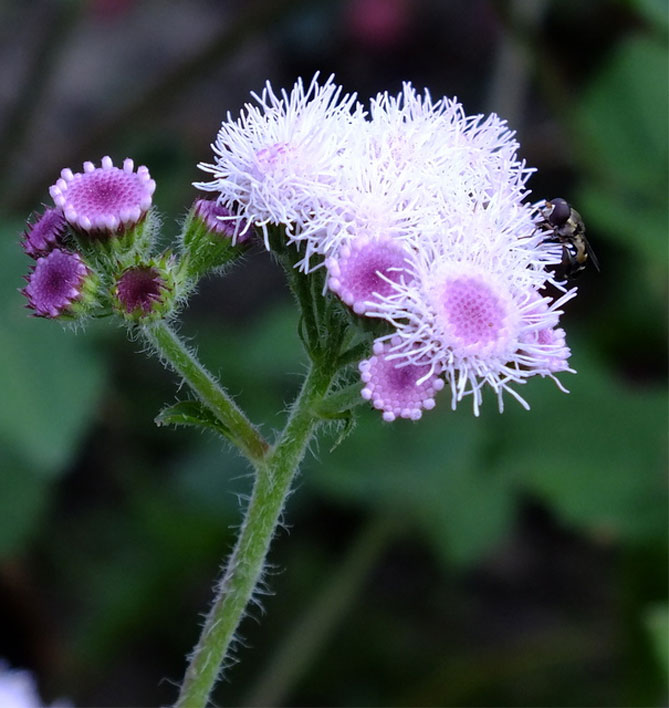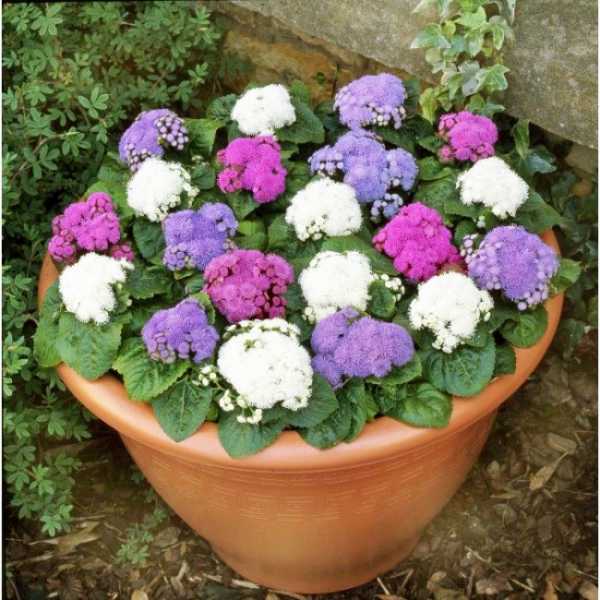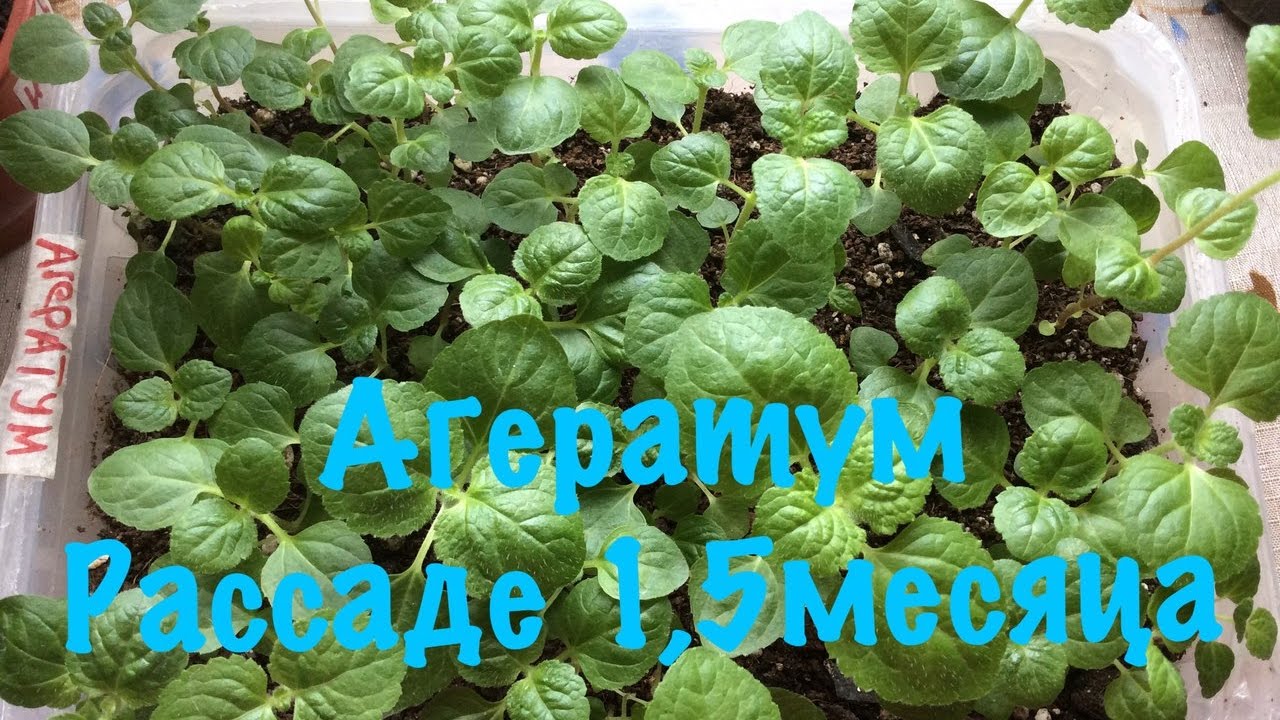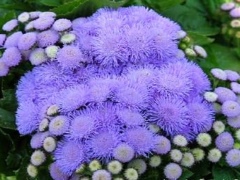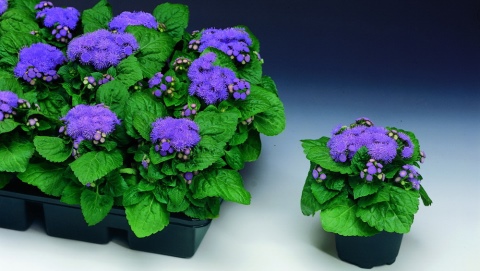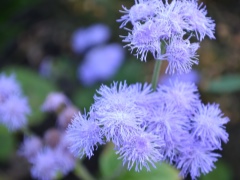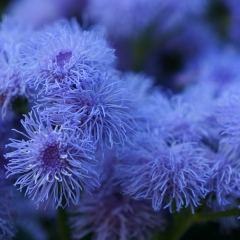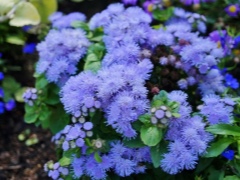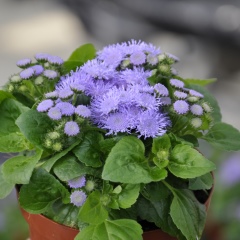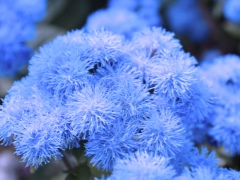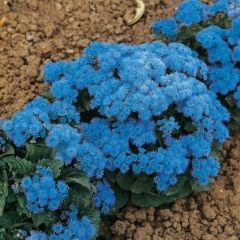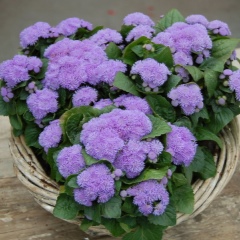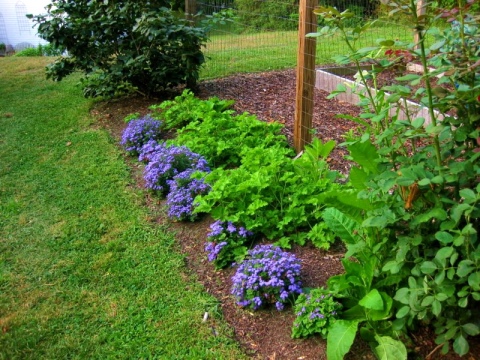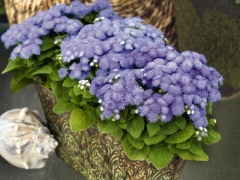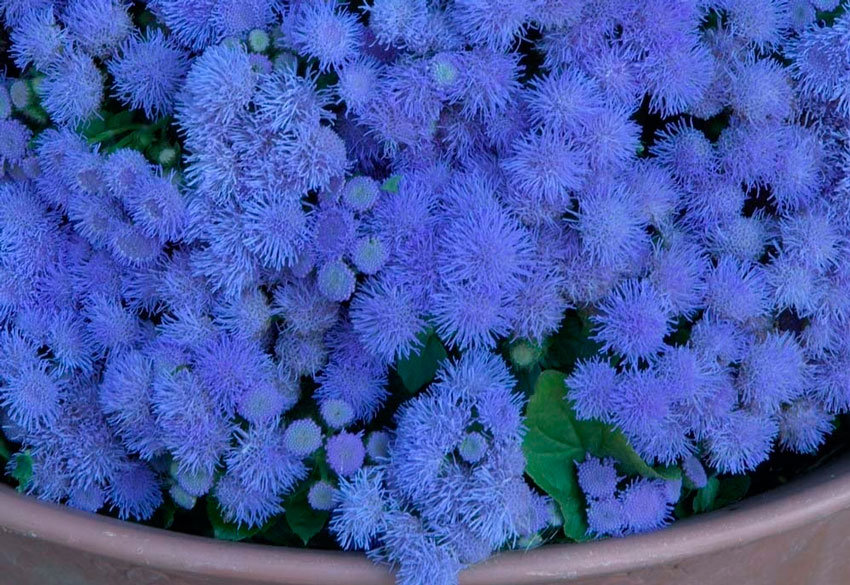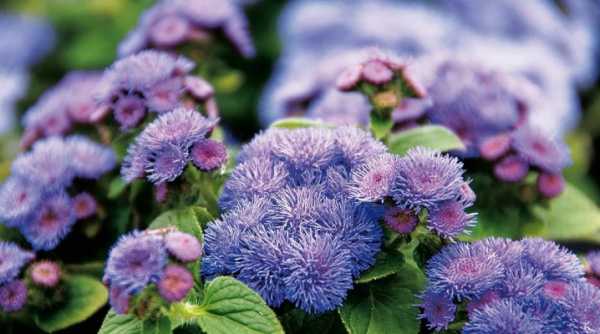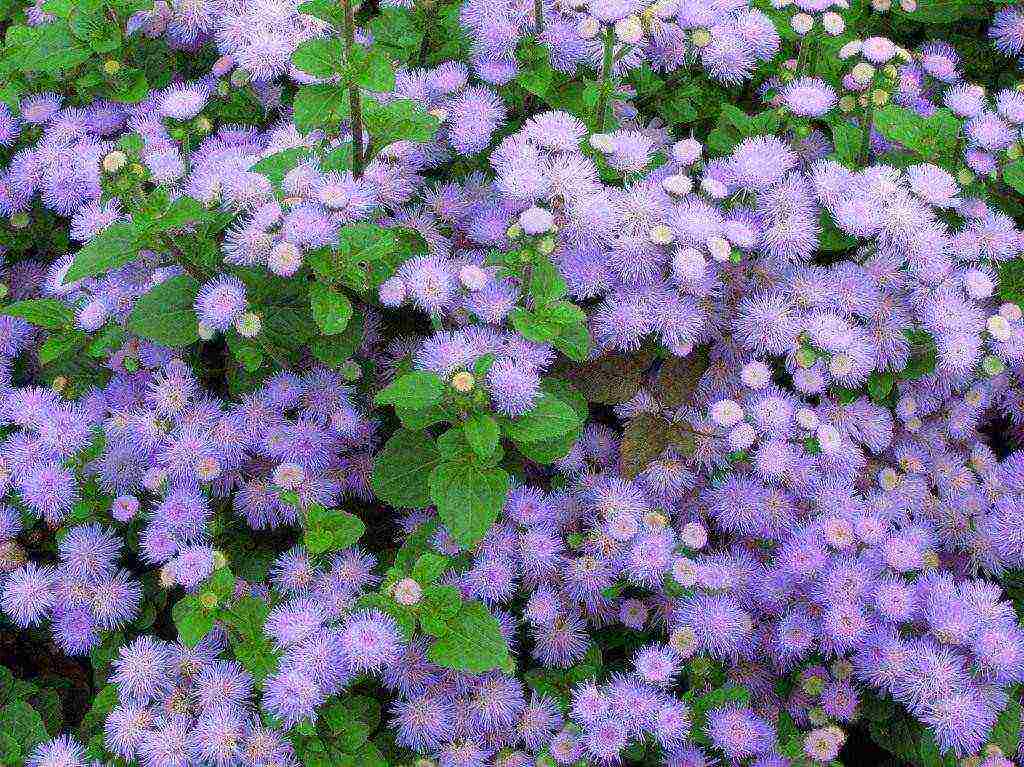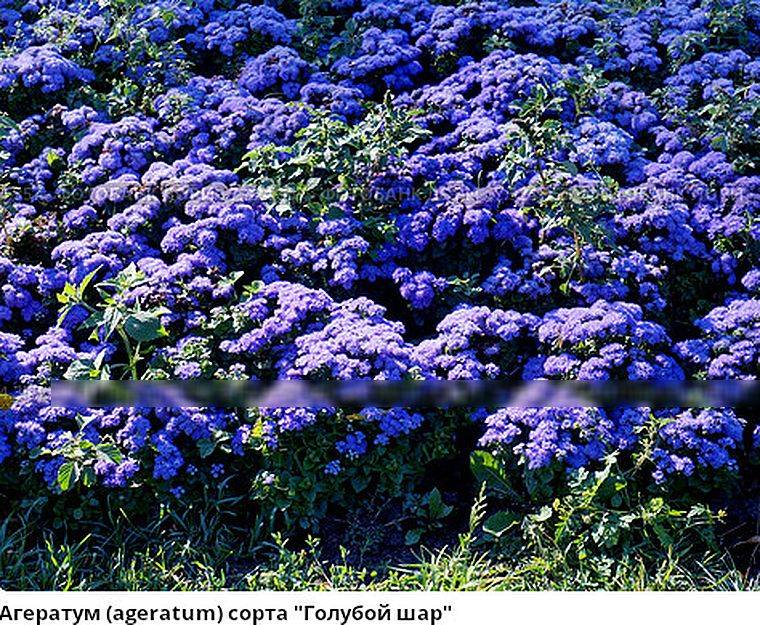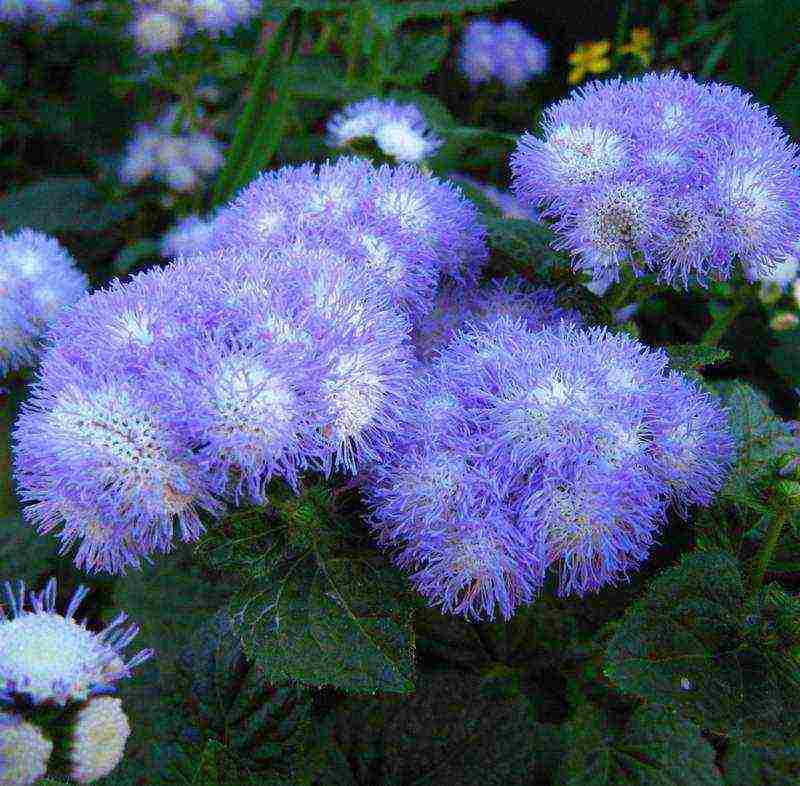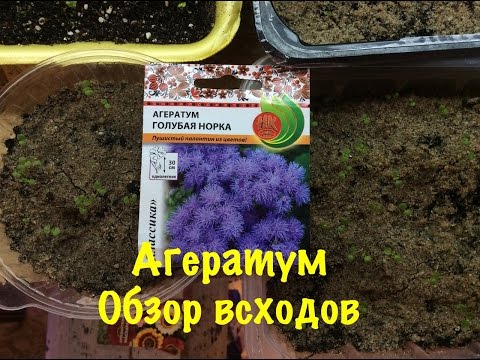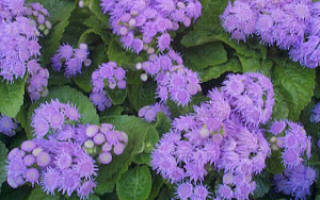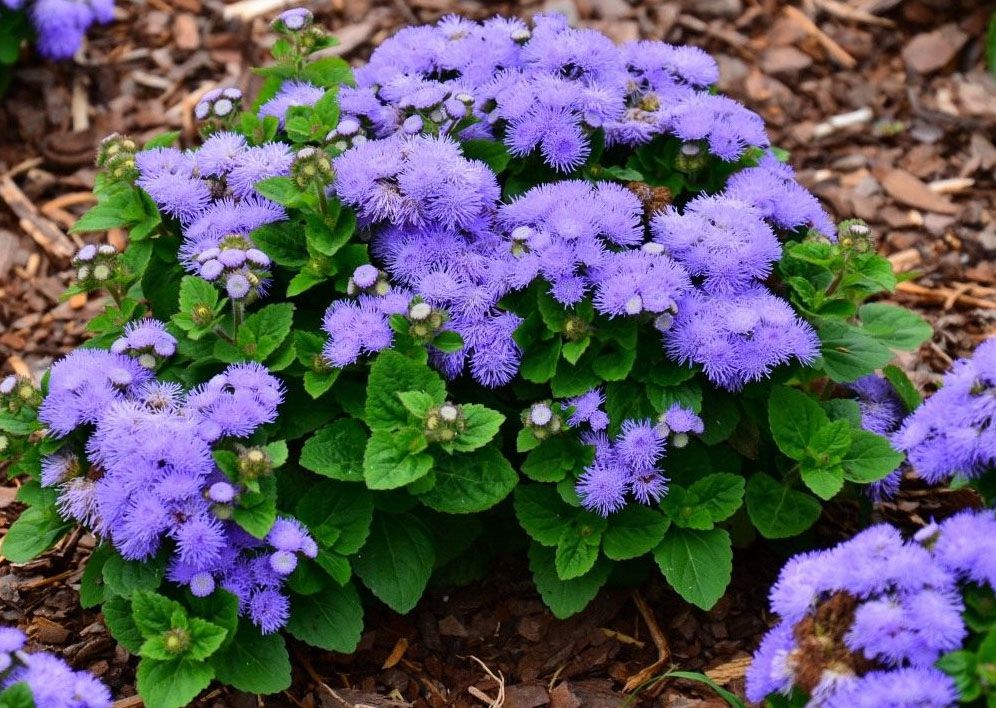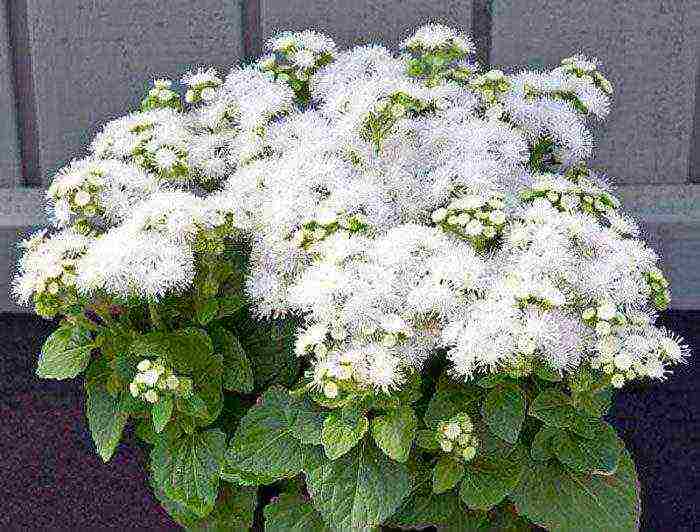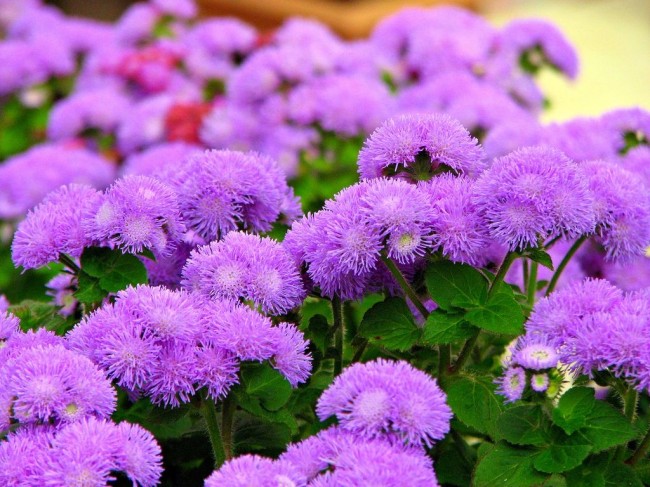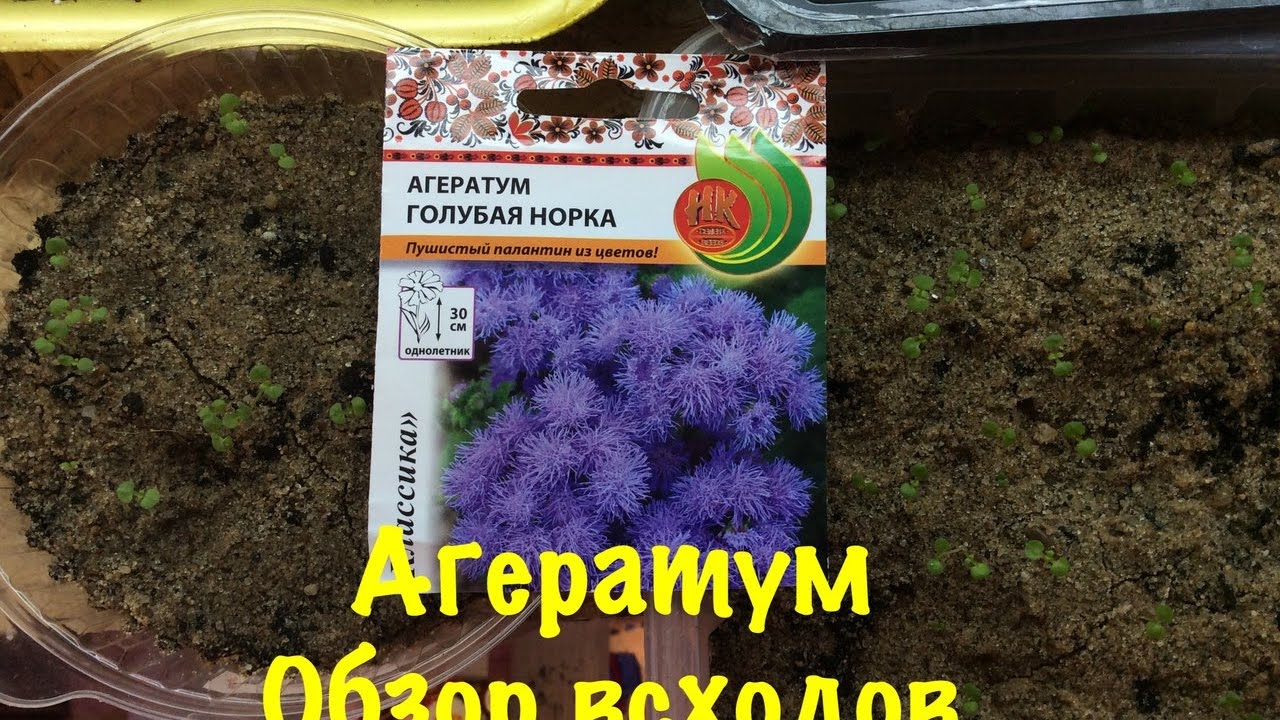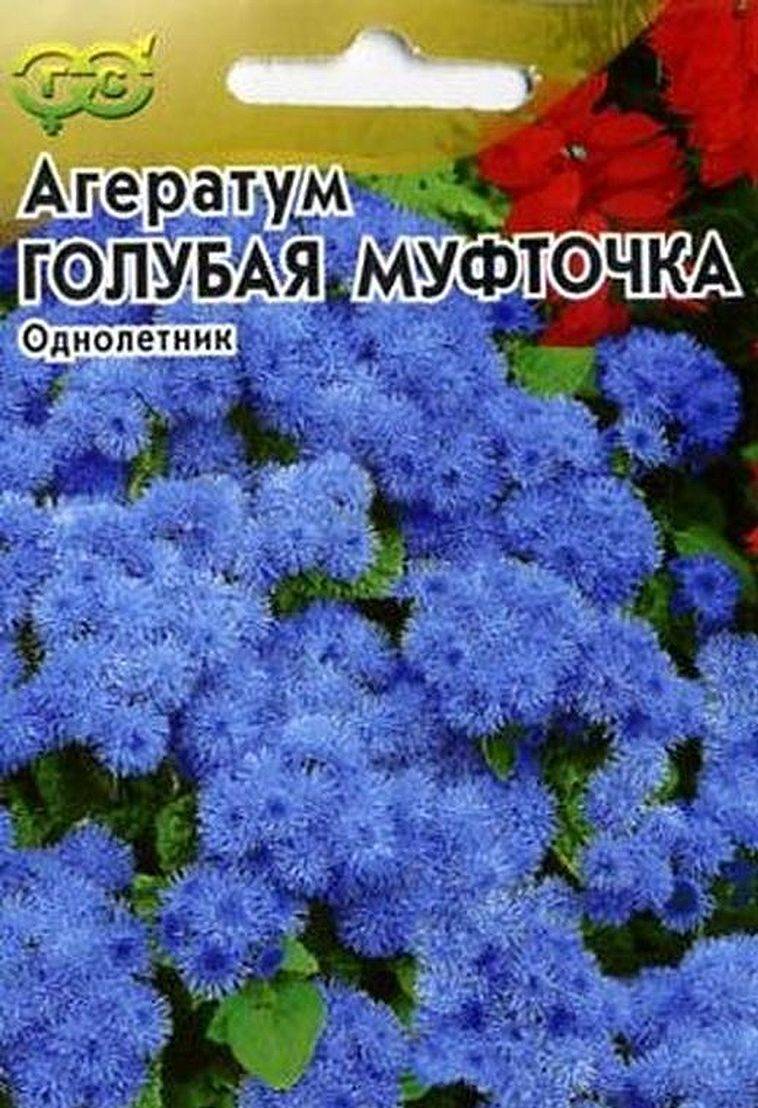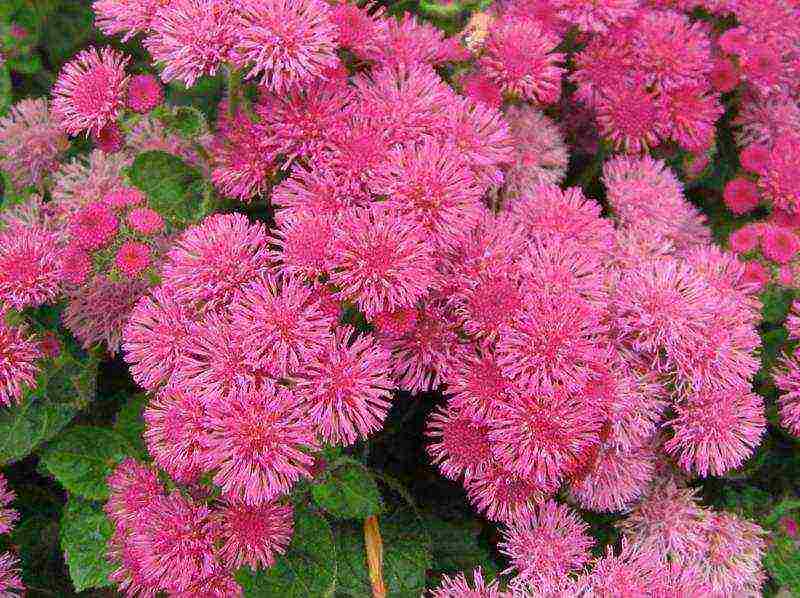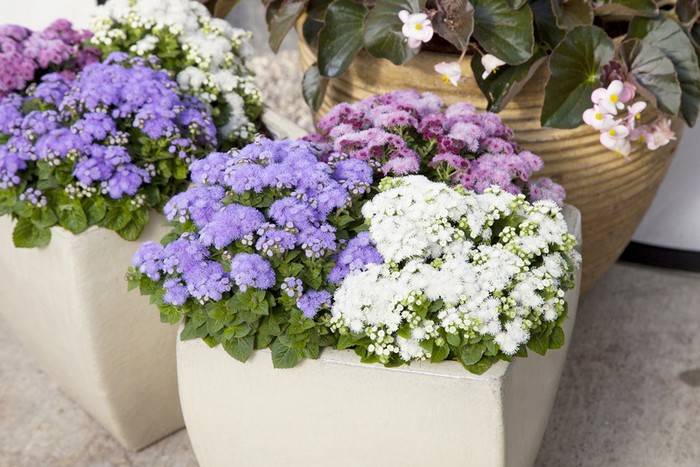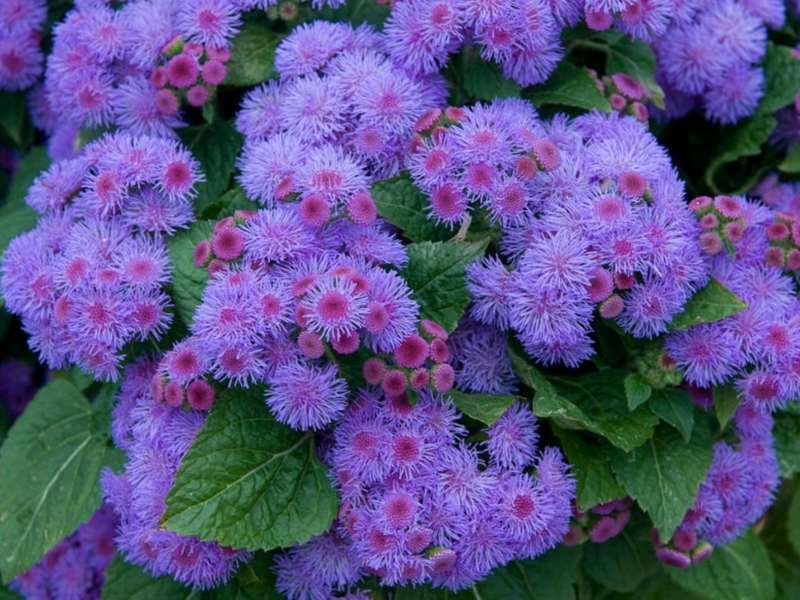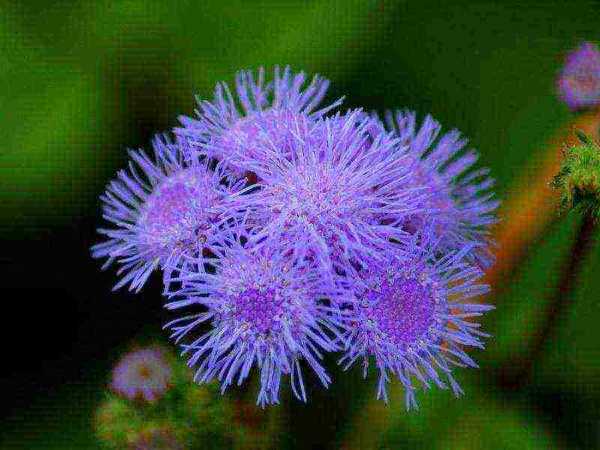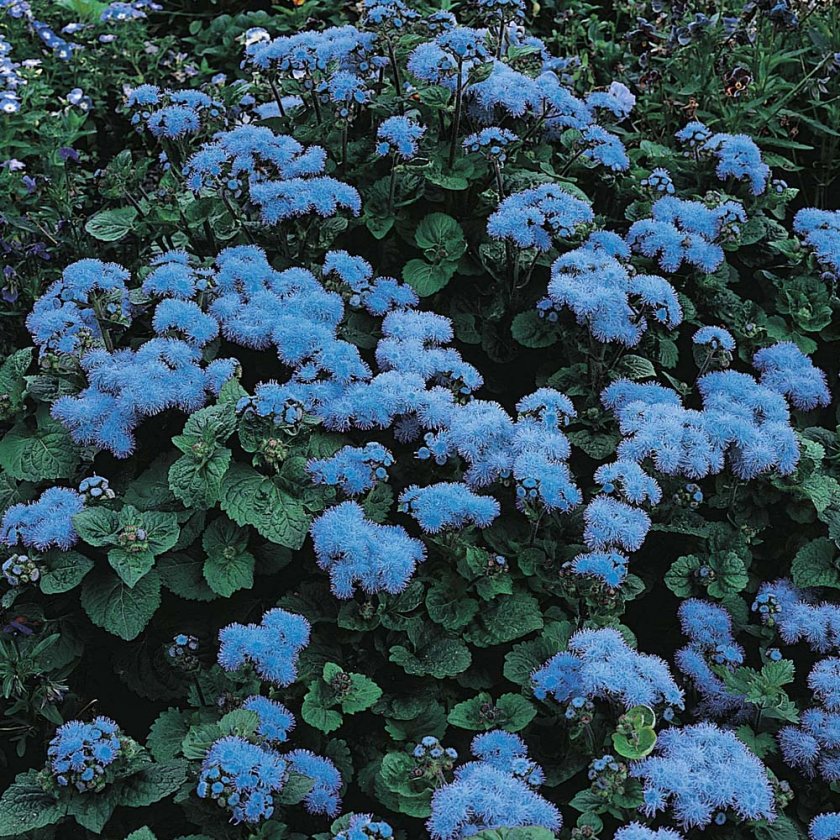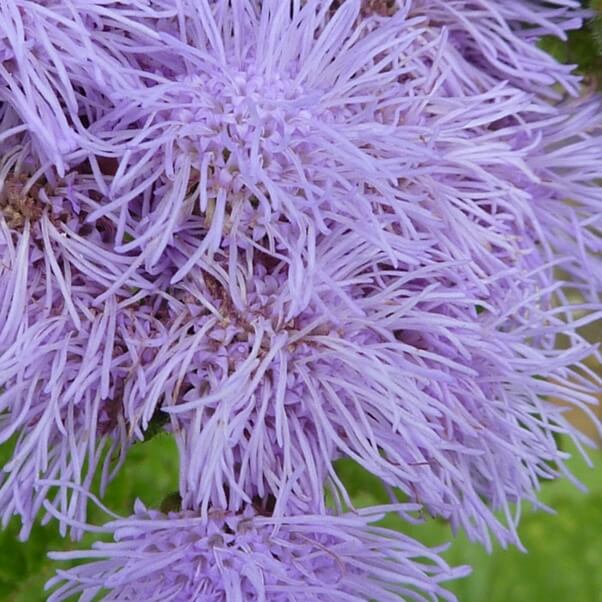Diseases and pests
In general, we can conclude that ageratum is an unpretentious and undemanding plant when it comes to basic care measures. But at the same time, it should be borne in mind that the flower is susceptible to a large number of diseases, and harmful insects and microorganisms can also affect it.

If the roots do not get enough of it, but they receive a large amount of water, then with a high probability they will be susceptible to such ailment as root rot. If your flower is sick with this disease, then it will not be possible to save it - it will die in any case. Therefore, it is worth digging up diseased plants and burning them so that root rot does not spread to other bushes.

Another common plant disease is bacterial wilting. It occurs for no apparent or obvious reason, almost by accident. Most often, the disease appears at the initial stage of leaf chlorosis disease. In addition, the flower can be influenced by the so-called cucumber mosaic. In the event of this ailment, yellow blotches or even spots appear on the leaves of the ageratum, the stem of the plant becomes glassy, and the unblown buds begin to fade.

If you notice the symptoms of this disease, then you should immediately remove all affected areas of the plant, and all the remaining parts should be carefully treated with insecticidal preparations or natural herbal infusions (for example, from bird cherry, wormwood or tansy). As for harmful insects and microorganisms, it should be borne in mind that nematodes, spider mites and whiteflies can have a negative effect on ageratum. In order to deal with them, chemical agents should be purchased in specialized stores for gardeners.
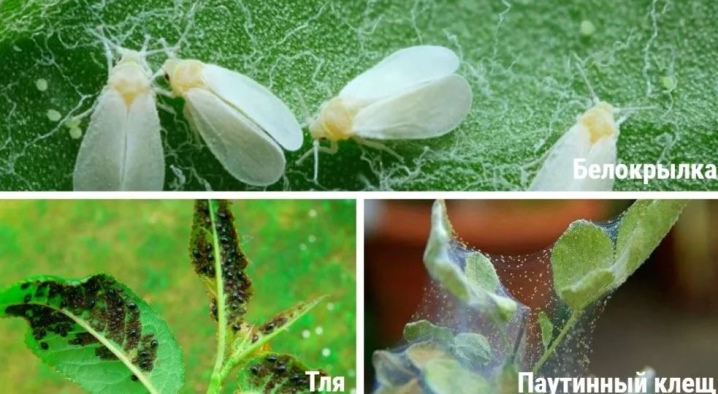
For information on how to grow seedlings from ageratum seeds, see the next video.
Ageratum varieties
There are a lot of species of this plant, but in the conditions of our climate in a greenhouse, in an open field and even in a flowerpot on a window, the following varieties can be grown from seeds:
- White ageratum - 20 cm in height, differs in white colors, as the name implies.
- Ageratum Blue mink is a 25-centimeter bush that is densely covered with small blue flowers. From a distance, they really resemble mink fur, the inflorescence reaches 8 cm in diameter.
- Spring drops are a bush that grows up to 30 cm, covered with inflorescences 1.5-2 cm in diameter. It blooms in June and decorates the site until October. The bush is very dense, the inflorescences retain their elasticity in the strongest wind.
- Snow Ball - the whitest inflorescences on beautiful green stems will complement the bright flower garden. The bush is covered with a large number of inflorescences and blooms in late June - early July.
- The Blue Fairy Tale is a plant covered with sky-blue inflorescences. There is also a darker shade of aqua. This ageratum variety is most commonly used for vibrant flower beds and is loved by landscape designers.
- The Blue Lagoon and Dondo are among the highest ageratum varieties, reaching a height of 40-60 cm. The sky-blue bush blooms in June and retains its freshness until the first frost. It is not capricious and can grow in the shade, even withstands a short drought.
- And the smallest plant of the ageratum genus is the hybrid group of Hawaii. The White Hawaii and Royal Hawaii varieties do not exceed 18 cm in height. Each variety is dwarf, but this does not diminish their beauty when they bloom with snow-white flowers.
- Faye Pink and Bonjour seed mixture are dark pink and burgundy flowers, reaching a height of 30–35 cm. Inflorescences are no more than 5 cm in diameter.
The most popular varieties in addition to the above are the Blue Muff, White Ball and Blue Ball, Blue Mink, Houston, Leda, Mexican, Cloud Nine.
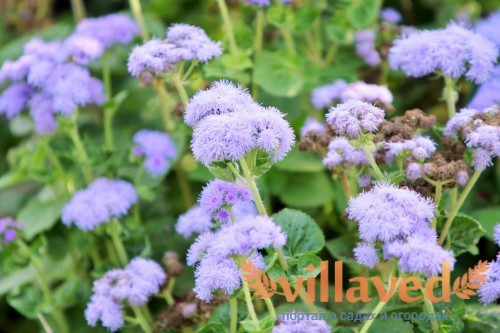
Ageratum Mexican
We have chosen a variety, and now it's time to move on to planting seeds in the ground. And you can see photos of different varieties of ageratum in the gallery.
Growing ageratum
Ageratum is a light-loving, heat-loving and drought-resistant plant that requires moderate watering. Plants are damaged even by slight frosts, therefore, it should be planted in open ground after the end of the period of return frosts.
The plant is very fond of light and warmth. Neither wind nor rain spoils it at all. The plant prefers open, sunny places, although it also tolerates partial shade, but at the same time the brightness and colorfulness wilts, the plant stretches and blooms weakly.
The soil. Ageratum is not too whimsical to the soil, but it looks more luxurious only on loamy and sandy loam, non-acidic fertile land. He does not tolerate damp and stony soils, he can get sick from excess moisture, he does not like fertilizing the soil with fresh manure.
Care. The plant requires almost no maintenance, tolerates transplantation well, after which it grows well and quickly becomes covered with flowers.
For better flowering, moderate watering is required and, preferably, fertilizing with mineral fertilizers. The use of organic fertilizers enhances the growth of leaves and stems, but reduces the flowering of the plant.
Faded inflorescences on plants must be removed.

Reproduction of the Blue Nile rose
Reproduction of this variety is done by cuttings. It is better to harvest cuttings immediately after the first flowering. Eight-centimeter branches with a pair of leaves are cut from the central part of the stem. The lower cut is made obliquely, and the upper one is straight. In order for the root system to grow actively, before planting, the cuttings are immersed for 20 hours in a solution of sodium humate or root. After this time, they are washed off with water and transplanted into a container or open ground.

Cuttings
For the substrate, river sand or a mixture of sand and peat is used. The cuttings are planted at an angle to a depth of about 2 cm and then covered with foil. The seedlings are wetted several times a day by spraying. If everything is done correctly, then roots should appear in a month. After that, the film is removed, and the cuttings are fed with a urea solution for two weeks.
How to grow ageratum: all the ways
Getting a new plant is pretty straightforward. For working with ageratum, both seed and cuttings type of propagation are suitable. And if in the first version there is an opportunity to experiment and get a new color, then an exact copy of the mother plant will be obtained from the cuttings.
Seed growing method
Pour nutritious and breathable soil (5-6 cm in height) into a common container, moisten the soil from a spray bottle, spread the seeds on a damp surface. Conveniently, if varietal types of seeds are placed in dragees, then it is easy to observe the system in the arrangement of plants. If you germinate your own, then by breaking the box from the faded plant, you can place small seeds in a chaotic mess, and subsequently remove unnecessary seedlings. We usually sow seeds in mid-March.
The container with ageratum should be covered with foil or glass and moistened and ventilated daily. The optimum temperature for germination is 20-24 degrees. After 10-14 days, sprouts will appear, in the phase of two true leaves, they should be cut into individual pots.

Two weeks before planting in the ground, the seedlings must be hardened. We begin to take out the seedling bowls into the garden somewhere in mid-April.
Cutting method
A plant that has liked its varietal characteristics is dug out before the winter period and placed in a container of a suitable size. At a temperature not higher than +22 degrees and poor watering, ageratum is preserved until spring. 30-45 days before the estimated date of planting in the ground, the plant is cut into elements of 10-15 cm.The lower cut is treated with "Kornevin" or crushed charcoal and placed in loose soil. Cuttings need to create a mini-greenhouse, for this, cover the future plants with transparent film or plastic cups. Remove condensation and ventilate daily to prevent rotting. After 3 weeks, the cuttings will give roots, and after 1.5 months, young shoots will appear on the plants. Ageratum should be planted in the ground only after a stable positive air temperature indicator.
The key to good germination and abundant flowering is the correct composition of the soil. Light sandy loam and loamy soils with a slightly alkaline reaction, allowing moisture and air to pass through, are ideal for the plant. In open ground, the bushes should be placed at a distance of 15-20 cm from each other in a checkerboard pattern.
The secret of abundant flowering is the regular formation of bushes. As it is pulled, the stem is cut off, leaving 2-3 internodes from the base. Then the plant will be compact and abundant. You can not overfeed the ageratum. It is enough to water it with WMD fertilizer in the recommended proportion once every two weeks. Remember that a lot of nitrogen will cause a build-up of leaf mass to the detriment of flowering.
Watering is necessary as the soil dries out. Dropped plants with spots on the leaves, plaque on the stem, indicate stagnant moisture or hypothermia. The situation should be analyzed and appropriate measures should be taken so as not to ruin the plant. Loosening the soil will help to save from the bay, in order to evaporate unnecessary moisture. And spraying at night will save from the effects of cold temperatures (the drug is destroyed by exposure to sunlight) Zircon or Epin.
Growing ageratum works best in open, sunny areas. But a little shading is also acceptable.
Peculiarities
This variety belongs to the bluish varieties of dwarf spruces. At the age of 10, the growth of the tree is 0.7-1.5 m, the crown width is 35-80 cm.In the first years, the spruce adds about 2.5-5 cm per year, and upon reaching the age of 6-7 years, the annual growth is 15 cm. The crown grows up to 15 years, and then its increase slows down to 1-3 cm per season. At the age of 30, the height of the tree reaches 2-3 m, and the width of the crown is 1.5 m.
A blue-gray young spruce has a crown in the shape of a regular cone, however, over the years, the crown changes somewhat, and in the case of decorative planting, this problem must be dealt with by pruning. The main feature of the variety is the blue color of the young growth. Gradually, it acquires a green color, and not evenly, but in spots. Ripe needles meet winter with a green color with a bluish tint.
Young needles are soft, but over time they become stiff and dense. The rhizome stretches to a depth, then grows in a horizontal position, gradually spreading to a distant distance beyond the borders of the crown. Fruit-cones in this variety are rarely formed. This variety is young, and it is not yet known what the tree's lifespan is, but the description suggests that the spruce lives at least 50 years.
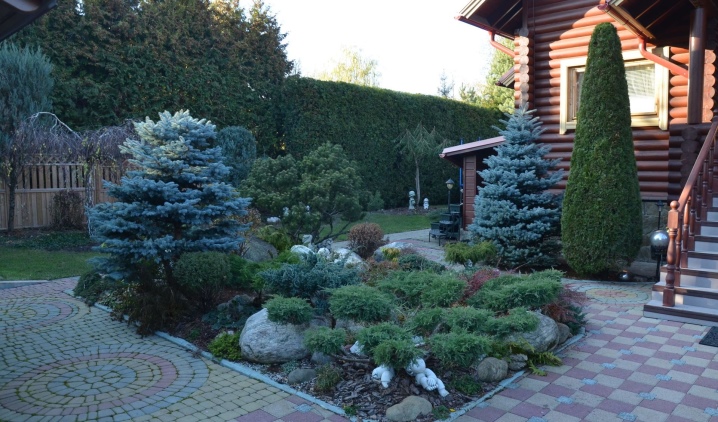
Ageratum: so that flowering is lush
Nowadays, perhaps, it is impossible to imagine a personal plot without flowers. And this is not surprising, because they give a feeling of happiness, delight the eye with bright colors.
Ageratum (Ageratum) - a unique flower for creating landscape compositions. The blue rugs of this plant are very fond of gardeners, who use them to perform landscape compositions at various flower exhibitions and in urban landscaping.
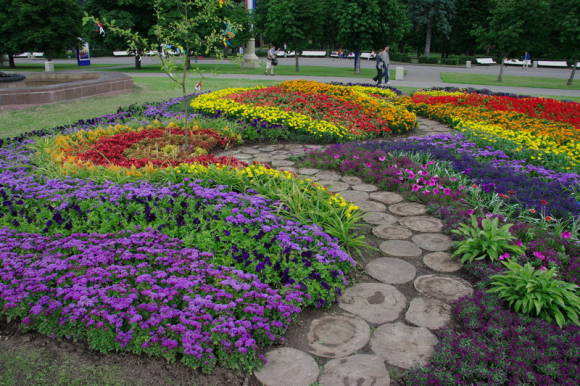
Among annuals, plants with bright blue flowers can be counted on one hand. One of the few is the hero of our article - Ageratum.
Recently, he turned from a beggar into a prince, he was noticed, loved and actively planted in flower beds. The breeders also did not stand aside, they began to develop new varieties, and their successes were rewarded according to their merits. But first things first.
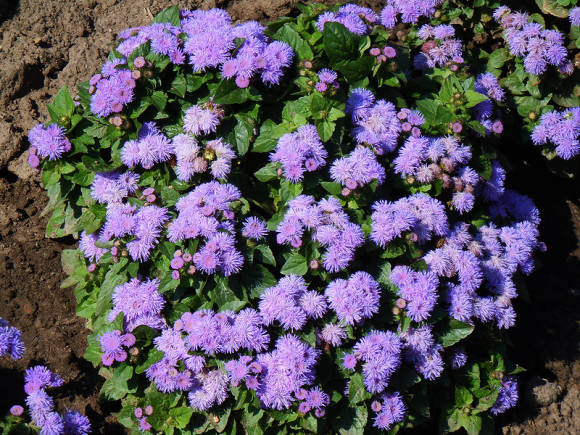
Ageratum in translation means - "ageless". The plant received this name not only because the period of its flowering lasts from June to September, almost before the onset of frost, but also because its flowers retain their brightness and color intensity for a long time. Obviously, this is the reason that the plant is affectionately called by the people a long-flowered plant.
Ageratum is a perennial plant that belongs to the Asteraceae family, but is cultivated in the open field as an annual. His homeland is Central and South America. In culture, the most common ageratum of Houston, or Mexican (Ageratum houstonianum).
It is a highly branched, compact plant with a height of 15 to 50 cm, with dark green, pubescent, heart-shaped leaves. Plants have many branches, which are covered with hairs of short length. In their shape, the leaves can be triangular, rhombic or oval, serrated along the edges, located opposite.
The flowers of the ageratum are small, narrow tubular, fragrant, bisexual. The stigma and the column are almost twice as long as the corolla - this makes the inflorescences unusually decorative and fluffy. The color of the flowers is often blue, but there are varieties with white, blue, lilac, pink flowers.
Flower baskets with a diameter of 1 to 1.5 cm form dense or loose corymbose inflorescences up to 10 cm in diameter, which completely cover the entire plant. The plant blooms profusely and for a long time, from June to frost. Ageratum varieties vary greatly in height, color and size of inflorescences.
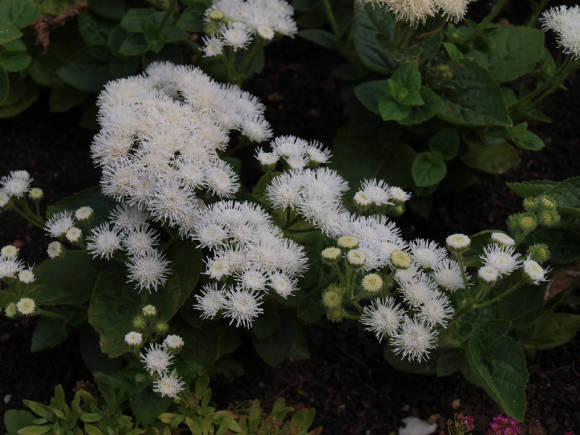
Application in landscape design
They like to use beautiful blue spruce as tub plants. In winter, young Christmas trees (under 10 years old) are decorated with colorful toys and garlands. Blue Diamond will look no less luxurious as the central composition. If the site allows, then around the decorated evergreen tree it will turn out to lead round dances on New Year's Eve.
In addition, this variety is suitable for group plantings. To "highlight" certain areas in the local area, "Blue Diamond" is planted in rows. It is worth noting that Blue Diamond spruce grows well in urban areas. They are planted in parks and along highways. However, in dry summers, conifers need periodic watering.
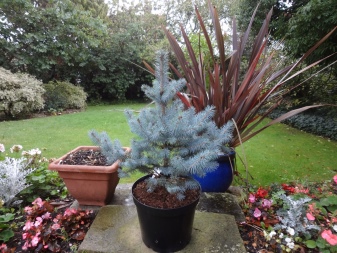

In the next video you will find more information about the Blue Diamond Spruce.
Planting and care in the open field
Almost all plant varieties can easily tolerate a short drought, and growing ageratum is a very simple task. It is not worth worrying about wintering, even if it is not possible to propagate the plant by cuttings, then from 1 gram of the fruit of the bush you will receive up to 7-8 thousand fresh seeds.
For lush flowering, ageratum needs abundant watering, only with enough moisture does it become lush and fluffy. But even in watering, you need to know when to stop: do not allow puddles to form in the hole, the earth should be evenly damp.
Ageratum inflorescences respond well to cutting and removing dried inflorescences, which happens to it quite often. The more often you prune the dead buds, the sooner new ones will grow. Note that even after an almost complete haircut on 2/3 of the bush, the ageratum is covered with new flowers in record time.
Weed weeding becomes an obligatory stage of care, because it simply strangles a low-growing plant. When removing the weed, be sure to fluff the soil under the ageratum bush to provide oxygen to the root system.
Landing rules
To begin with, it should be noted that the most traditional way of planting ageratum is growing a plant from seeds. However, before starting this process, it is necessary to germinate the seedlings. In order to do this, it is necessary to sow the seeds in boxes or containers. It is advisable to carry out this procedure in the middle of spring.In this case, planting a plant in open ground is allowed only when the climatic situation stabilizes and the spring frosts end.
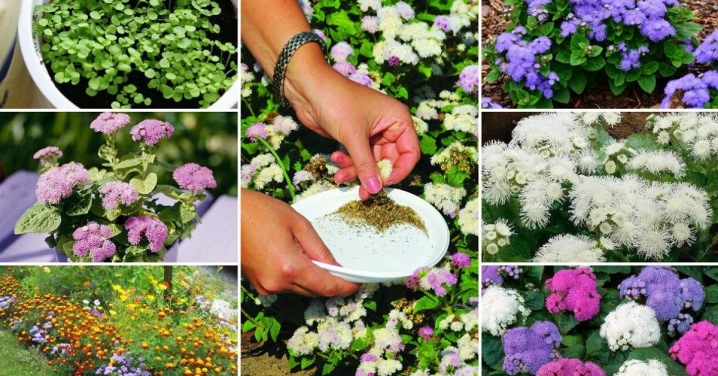
Before proceeding with the direct planting of the plant in open soil, you should carefully choose a permanent place for the growth of the flower. It needs to be loosened or even dug up
Also, pay special attention to preparing the optimal potting mix. It should consist of peat, humus and sand in equal proportions.
The process of sowing seedlings itself is recommended to be carried out at the end of March.
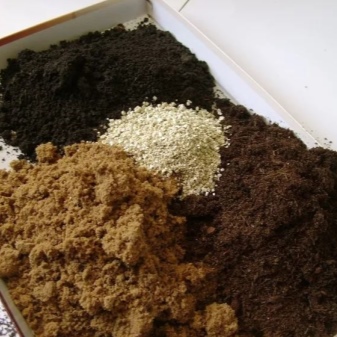
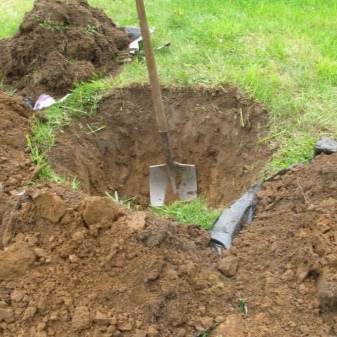
Experienced gardeners, as well as botanists, recommend young ageratum seedlings to dive twice. In this regard, they should be transferred to a separate dish only after the second time. The process of growing seedlings should be carried out in dry air, as dampness and moisture can negatively affect the condition of the plant. In addition, the soil should not be moistened unnecessarily. If you grow seedlings in greenhouses, then do not forget to ventilate on a regular basis.
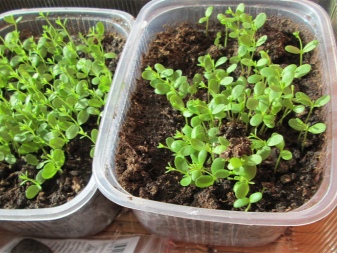
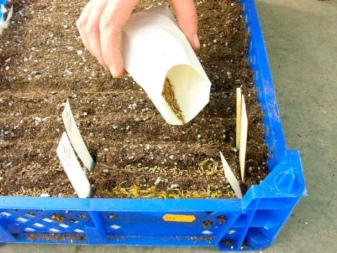
Young plants of ageratum can be watered only in the morning. 2 weeks before planting seedlings in the soil, the hardening procedure should be started, periodically taking the plants out into the open air. However, remember that it is still recommended to keep the seedlings in the shade - hardening should be carried out gradually. It is necessary to plant ageratum in small holes. In this case, the seedlings are placed so that they are in the ground at the same level at which they grew in seedling boxes. This should be treated with special care. Plants should be planted at a short distance from each other: about 10-12 cm. The appearance of the first flowers should be expected 2 months after sowing.
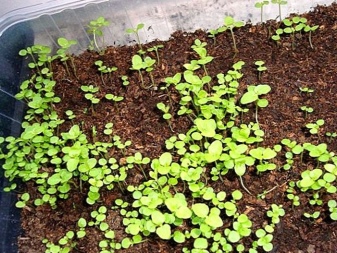
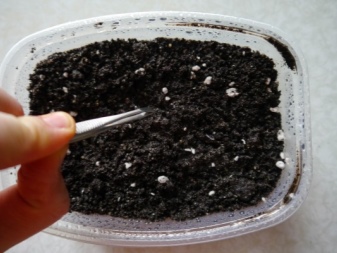
Despite the fact that, as a general rule, ageratum is a plant that is not very demanding in relation to the soil, the plant should be planted in a fairly light and non-acidic soil, there should also be a moderate amount of nutrient and mineral components. Ageratum has a fairly branched root system, therefore, it can cope with a lack of water and high air temperatures. On the other hand, one should take into account the fact that the flower does not tolerate frost well and may even die.
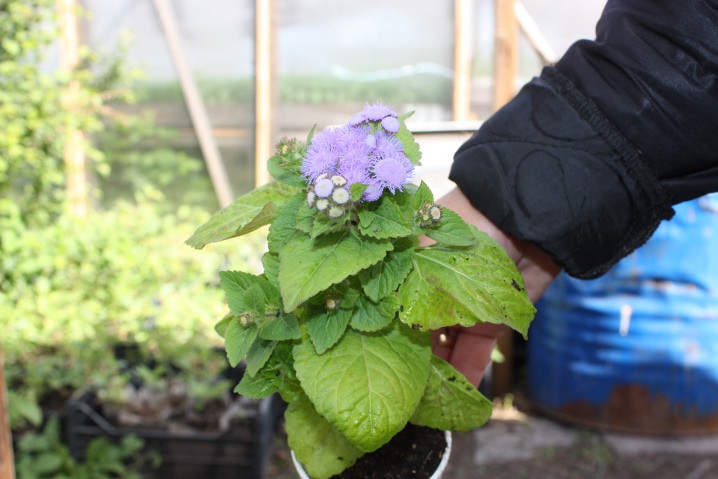
How to save a plant until next year: propagation by cuttings
In addition to growing from seeds (and this is the most popular option), ageratum propagates by cuttings. Not all gardeners know about this, but grafting is also very convenient. After all, you can save the plant until next year, so as not to take care of the seeds in the future. How can this be done?
On the eve of the first frost, you need to dig up the most beautiful bushes and carefully transplant them into large pots. Put the pots on the windowsill in the room, kitchen, the flower will winter well on the balcony, the room just needs to be warm. In such conditions, the ageratum can bloom for several more months, and in March you will dig up the mother liquors or cut the cuttings.
Everything, new ageratum seedlings for the garden are ready. They are planted in a greenhouse at the beginning of March or in boxes at the end of March, wait for germination and decorate the plot.
You can learn more about how to plant, dive and grow a beautiful ageratum from the training video.

